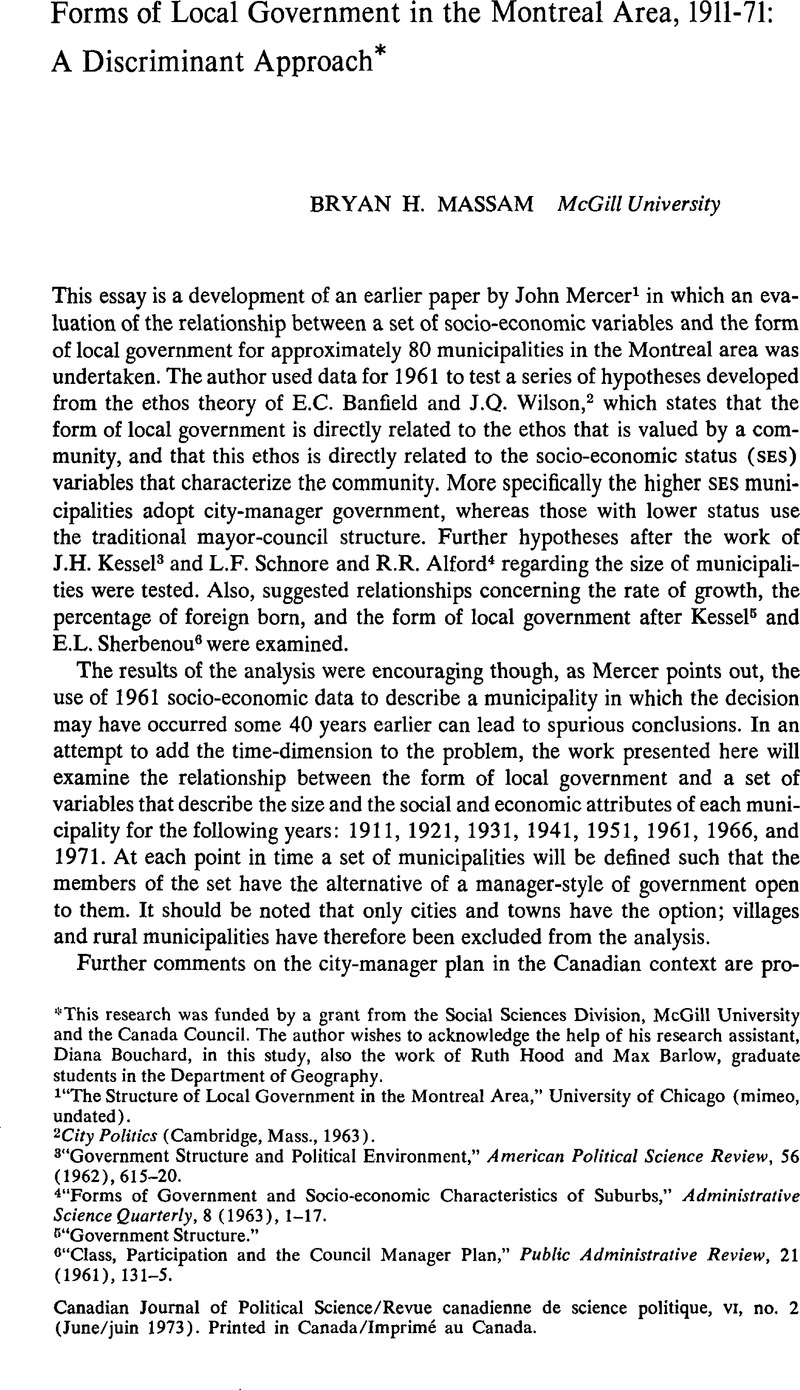Published online by Cambridge University Press: 10 November 2009

1 “The Structure of Local Government in the Montreal Area,” University of Chicago (mimeo, undated).
2 City Politics (Cambridge, Mass., 1963).
3 “Government Structure and Political Environment,” American Political Science Review, 56 (1962), 615–20.
4 “Forms of Government and Socio-economic Characteristics of Suburbs,” Administrative Science Quarterly, 8 (1963), 1–17.
5 “Government Structure.”
6 “Class, Participation and the Council Manager Plan,”Public Administrative Review, 21 (1961), 131–5.
7 “Canadian Local Government Development: Some Aspects of the Commissioner and City Manager Forms of Administration,” Canadian Public Administration, IX (1966), 55–68.
8 Urban Canada and its Government (Toronto, 1969).
9 “The C.M. Plan and How it Grew,” Public Management (Oct. 1970), 10–11.
10 Politics and Urban Policies (New York, 1971).
11 “Class, Participation.”
12 Canadian Almanac, 1970.
13 As evidenced by per capita income. See Lloyd, P.E. and Dicken, P., Location in Space: A Theoretical Approach to Economic Geography (London, 1972), 207–9.Google Scholar
14 Computer Programs Manual (Los Angeles, 1964).
15 A similar problem using this method is treated by Bell, T.J., “A Test of the Adoptive Hypothesis of Spatial Economic Pattern Development,” Proceedings of the Association of American Geographers, 2 (1970), 8–12.Google Scholar
16 “Discriminant Analysis: A Review of Recent Theoretical Contributions and Applications,” Economic Geography, 46, no. 2 (1970), 367–78.